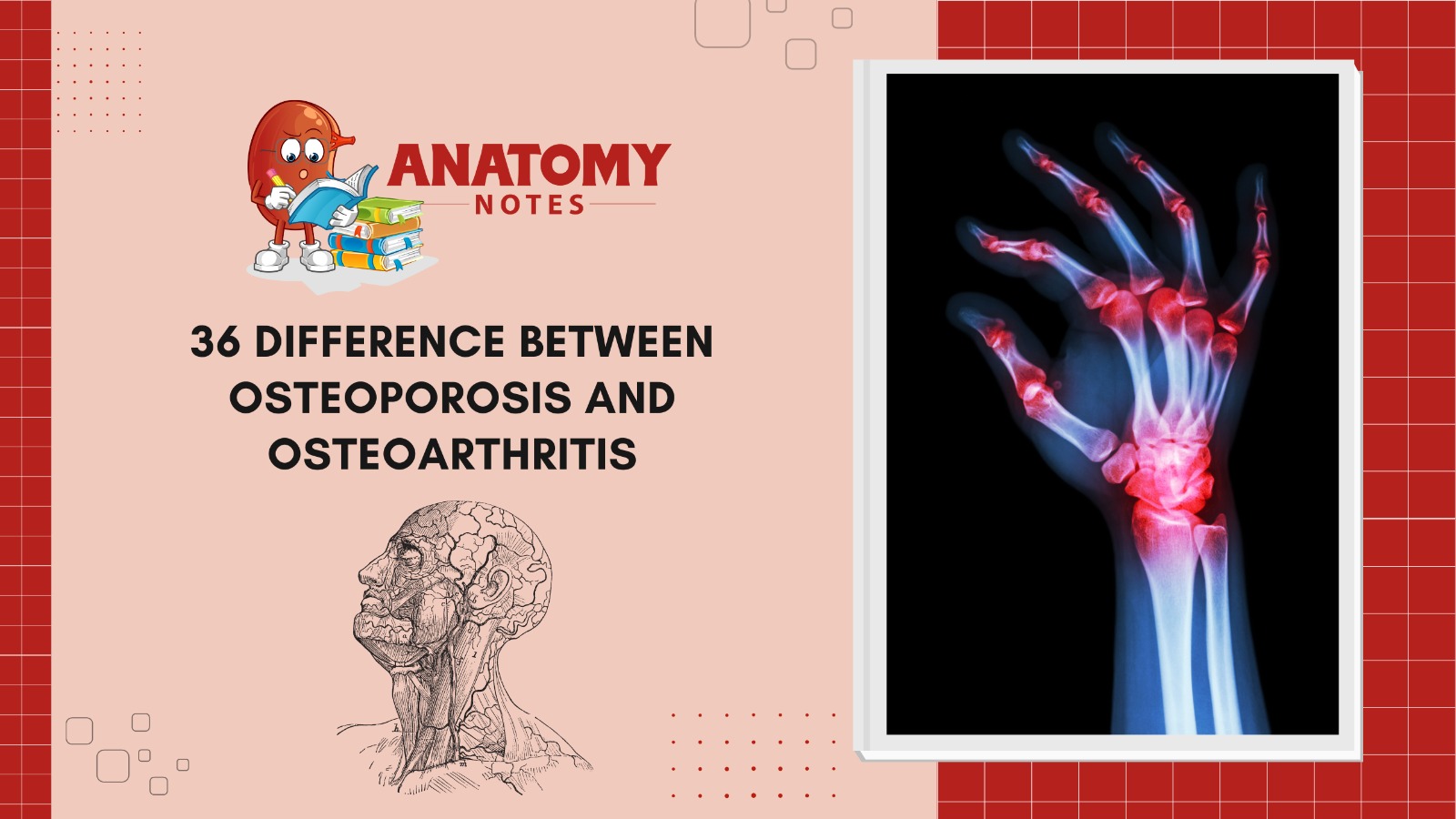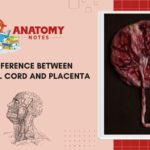Osteoporosis and osteoarthritis are both common musculoskeletal illnesses that impact bones and joints, but their origins, symptoms, and treatments differ. Correct diagnosis and treatment need to understand these diseases.
Osteoporosis causes reduced bone density and fragility, increasing fracture risk. It mostly affects bone quality, making bones brittle and prone to fractures from little trauma or stress. Hormonal changes, age, heredity, and lifestyle factors such as calcium deficiency, inactivity, and smoking can cause osteoporosis. Spine, hip, and wrist fractures are common. Osteoporosis causes back discomfort, stooped posture, and height reduction. Bone mineral density and clinical assessment frequently diagnose. Calcium-rich diets, weight-bearing workouts, and bone-density-boosting medicines are used to treat osteoporosis.
Osteoarthritis, a degenerative joint illness, breaks away cartilage, which cushions bone ends in joints. It mostly affects joint structure and function, causing pain, stiffness, and movement. Due to joint wear and tear, obesity, heredity, and aging, osteoarthritis is more common. Osteoarthritis affects joints, not bones, unlike osteoporosis. Knees, hips, hands, and spines are impacted. Clinical examination, joint imaging, and symptoms determine diagnosis. Treating pain, joint function, and quality of life. Physical therapy, painkillers, joint injections, and joint replacement are treatments.
Osteoporosis and osteoarthritis affect the musculoskeletal system, although they have different origins, consequences, and treatments. Osteoporosis causes brittle bones and fractures, whereas osteoarthritis causes joint discomfort and motion. Differentiating these two illnesses allows doctors to adjust treatments to each patient’s needs. A balanced diet, exercise, and weight management can reduce the incidence of osteoporosis and osteoarthritis, supporting lifelong musculoskeletal health.
|
S. No. |
Aspect |
Osteoporosis |
Osteoarthritis |
|
1 |
Definition |
A condition of reduced bone density and strength |
A degenerative joint disease |
|
2 |
Primary Site |
Mainly affects bone tissue |
Mainly affects joints |
|
3 |
Tissue Affected |
Bone tissue |
|
|
4 |
Age of Onset |
Commonly affects older individuals |
More common in older individuals |
|
5 |
Gender Differences |
Affects both genders, more common in females |
Affects both genders, varies by joint |
|
6 |
Etiology |
Imbalance between bone formation and resorption |
Degeneration of joint cartilage and tissues |
|
7 |
Bone Density |
Decreased bone density |
Not directly related to bone density |
|
8 |
Fracture Risk |
Increases risk of fractures, especially in spine and hips |
Not directly associated with fractures |
|
9 |
Pain |
Not typically painful in early stages |
Can cause joint pain and stiffness |
|
10 |
Joint Symptoms |
Not a direct cause of joint pain or inflammation |
Causes joint pain, stiffness, and inflammation |
|
11 |
Joint Structure |
Does not affect joint structure |
Can cause changes in joint structure over time |
|
12 |
Joint Swelling |
Absent |
Swelling can occur due to inflammation |
|
13 |
Joint Deformity |
Does not lead to joint deformities |
Can lead to joint deformities over time |
|
14 |
Joint Function |
Not primarily related to joint function |
Significantly affects joint function |
|
15 |
Gradual Onset |
Typically asymptomatic in early stages |
Symptoms tend to develop gradually |
|
16 |
Radiographic Features |
X-rays show joint space narrowing, osteophytes |
|
|
17 |
Treatment Approach |
Focuses on preventing fractures and maintaining bone health |
Focuses on pain management and improving joint function |
|
18 |
Risk Factors |
Age, gender, family history, low calcium intake |
Age, joint overuse, previous joint injury |
|
19 |
Preventive Measures |
Calcium and vitamin D supplementation, exercise |
Joint protection, weight management, exercise |
|
20 |
Bone Microstructure |
Can lead to porous and fragile bones |
Does not directly affect bone microstructure |
|
21 |
Joint Crepitus |
Absent |
Can lead to joint crepitus (cracking sounds) |
|
22 |
Joint Inflammation |
Not associated with joint inflammation |
Can cause joint inflammation |
|
23 |
Joint Stiffness |
Absent |
Common, especially after inactivity |
|
24 |
Joint Location |
Not primarily related to specific joint location |
Typically affects weight-bearing joints |
|
25 |
Imaging Techniques |
Bone density scans (DXA) |
X-rays, MRI, joint aspiration |
|
26 |
Joint Mobility |
Does not directly affect joint mobility |
Impairs joint mobility |
|
27 |
Joint Space Narrowing |
Absent |
Common radiographic feature |
|
28 |
Hereditary Factors |
Family history can increase risk |
Genetic factors can contribute to risk |
|
29 |
Pathophysiology |
Imbalance between bone formation and resorption |
Degeneration of joint cartilage and tissues |
|
30 |
Joint Replacement |
Not a direct cause for joint replacement |
May lead to joint replacement in severe cases |
|
31 |
Hormonal Factors |
Hormonal changes can affect bone health |
Not directly associated with hormonal changes |
|
32 |
Joint Cartilage Changes |
Does not cause direct cartilage changes |
Leads to cartilage degradation over time |
|
33 |
Muscle Involvement |
Not primarily related to muscle involvement |
Can lead to muscle weakness and atrophy |
|
34 |
Inflammatory Biomarkers |
Not typically associated with inflammation |
Inflammatory markers can be elevated |
|
35 |
Metabolic Factors |
Metabolic factors impact bone health |
Not directly related to metabolism |
|
36 |
Disease Progression |
Gradually decreases bone density and strength |
Gradually worsens joint function and structure |
Frequently Asked Questions (FAQS)
Q1. What is the main difference between osteoporosis and osteoarthritis?
Osteoporosis causes reduced bone density and fragility, increasing fracture risk. Osteoarthritis, a degenerative joint illness, causes discomfort and mobility by breaking down joint cartilage.
Q2. Can osteoporosis and osteoarthritis occur simultaneously in the same individual?
Osteoporosis and osteoarthritis can coexist. These disorders are separate, yet older persons may have both. Osteoporosis mostly affects bone density, whereas osteoarthritis affects joints.
Q3. Are genetics a factor in the development of osteoporosis and osteoarthritis?
Both disorders are hereditary. Osteoporosis and osteoarthritis can be inherited. Diet, exercise, and smoking can contribute to their development.
Q4. How are osteoporosis and osteoarthritis diagnosed?
Both disorders are hereditary. Osteoporosis and osteoarthritis can be inherited. Diet, exercise, and smoking can contribute to their development.
Q5. What are osteoporosis and osteoarthritis treatments?
Calcium-rich diets, weight-bearing workouts, bisphosphonates, and hormone treatments are used to treat osteoporosis. Osteoarthritis treatment emphasizes pain alleviation, joint function, and quality of life. Physical therapy, NSAIDs, joint injections, and, in extreme situations, joint replacement surgery may be used.




